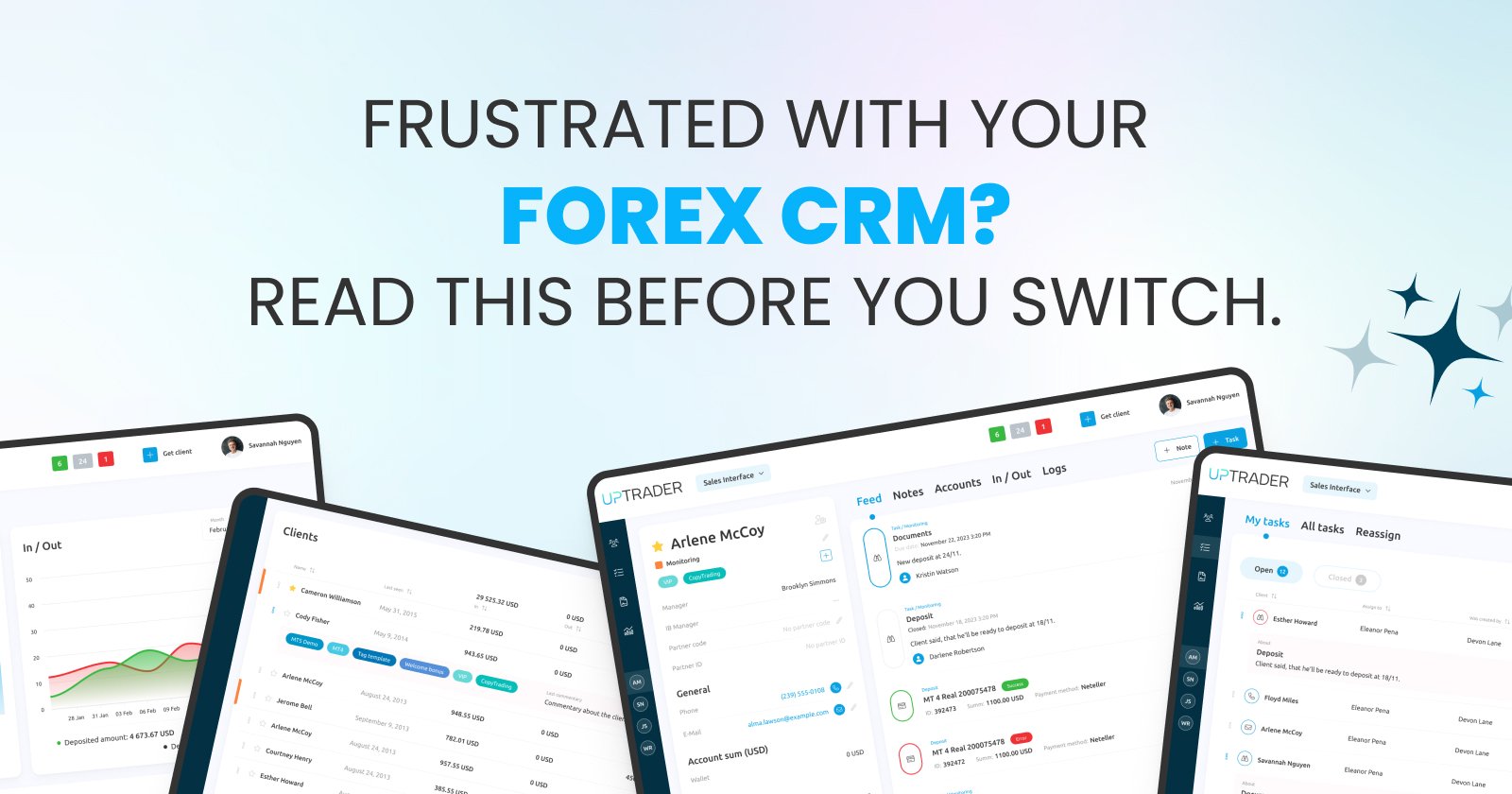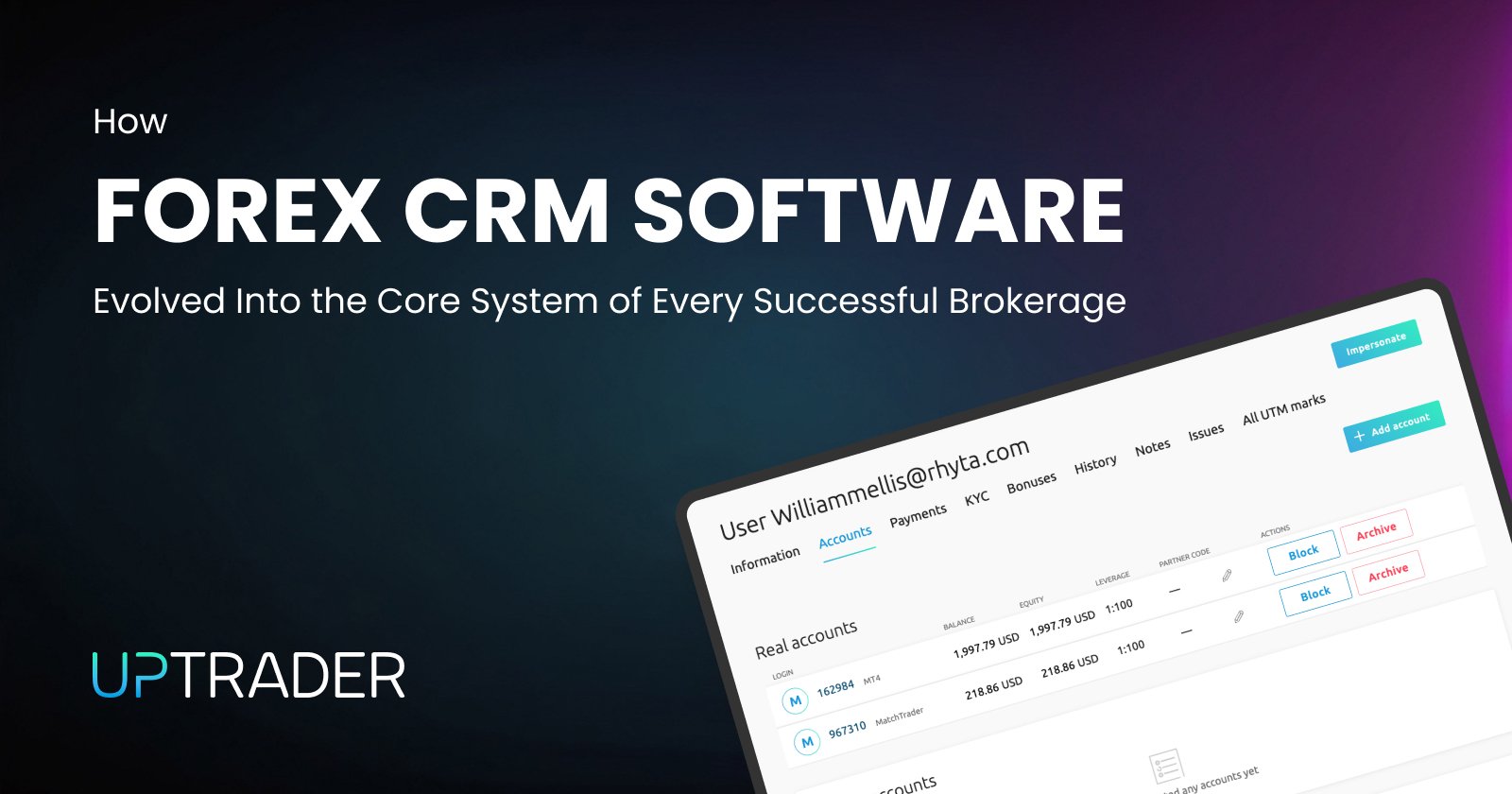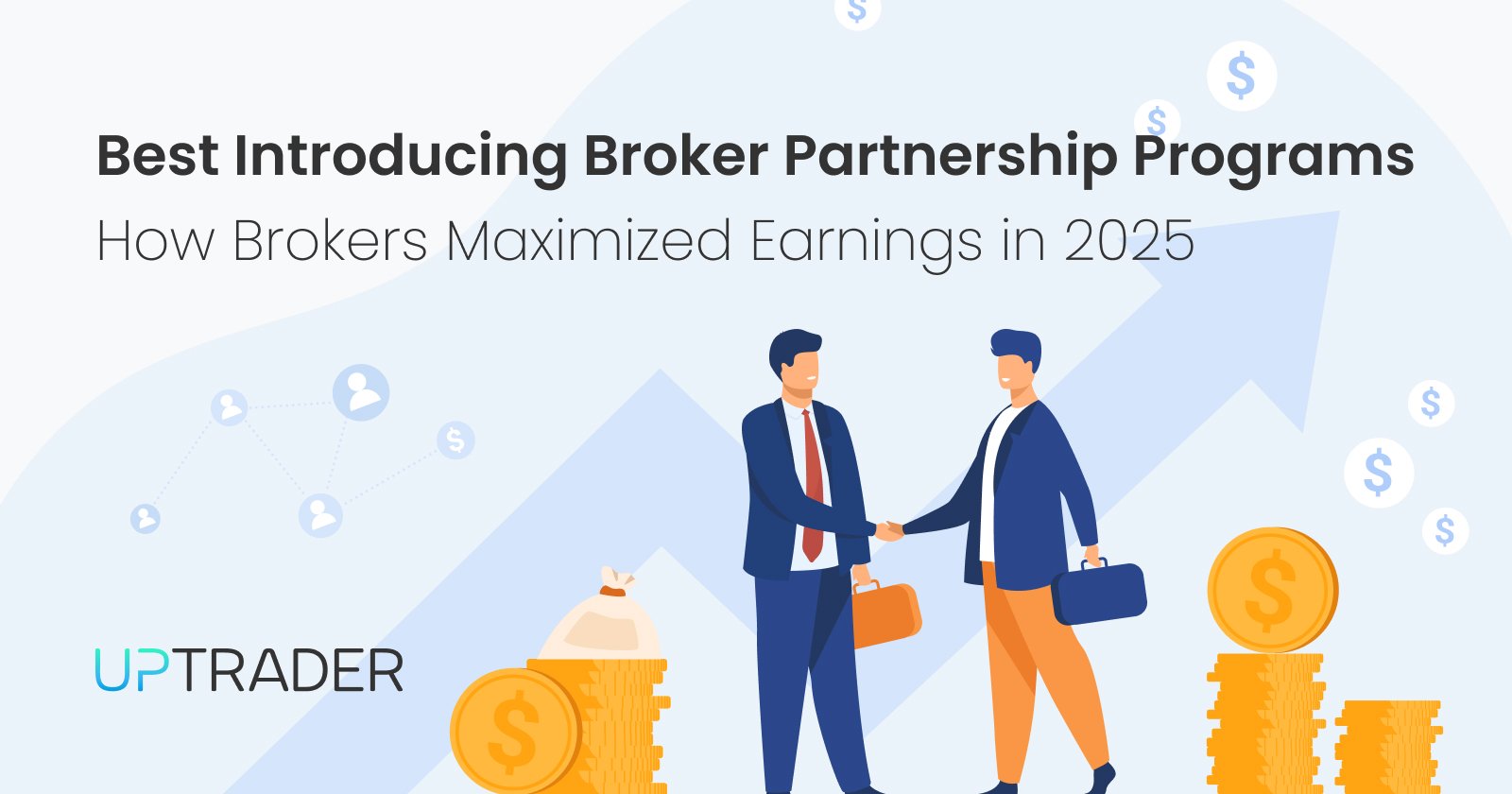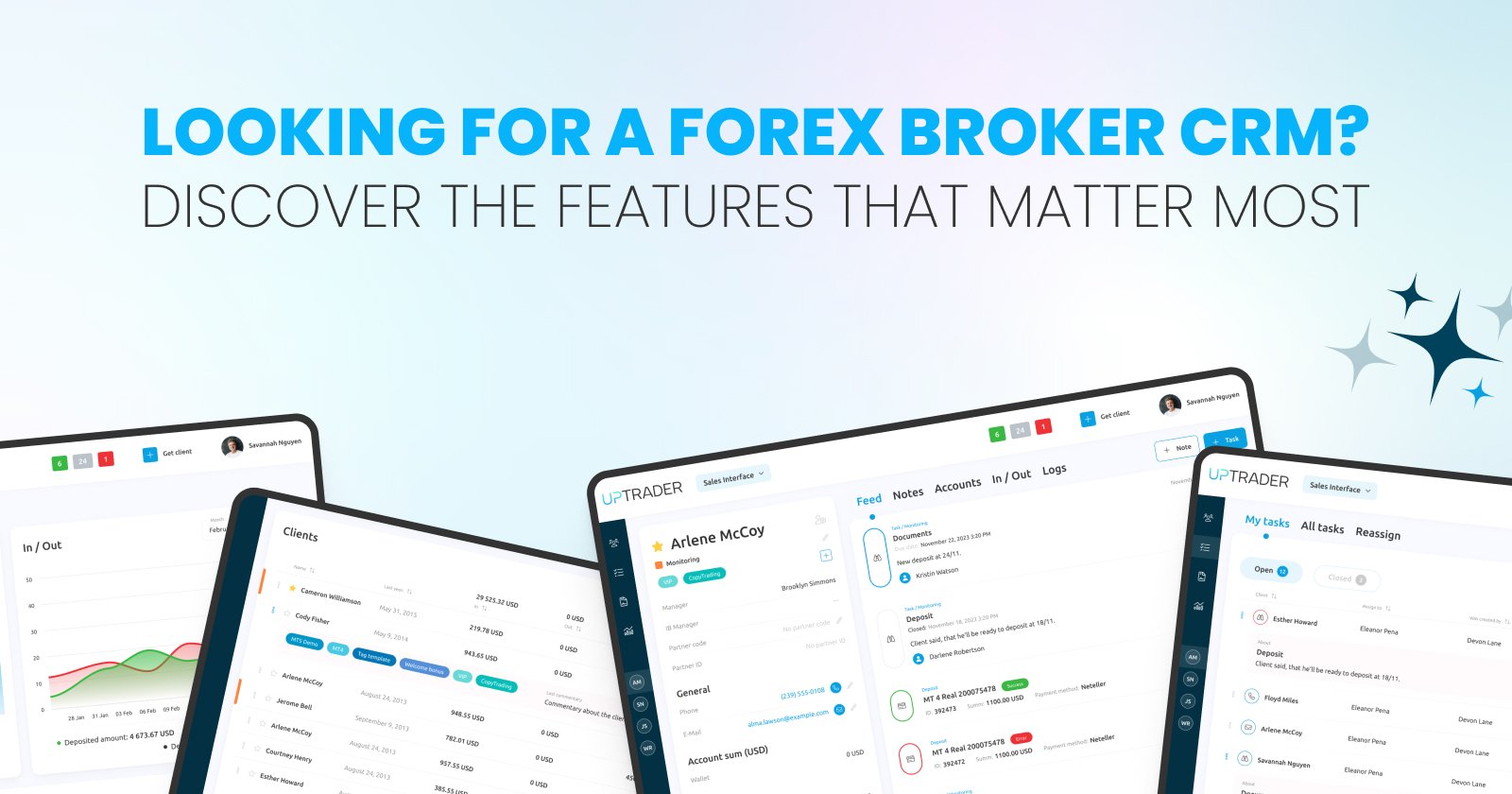Frustrated With Your Forex CRM? Read This Before You Switch.

Share this publication:
If you’re wincing every time your team opens the Forex CRM, you’re not alone. Most brokers outgrow their first system fast: onboarding slows down, IB payouts get messy, reports don’t match what the trading servers say, and support tickets pile up. You start wondering whether it’s time to switch — then you remember the horror stories about migrations gone wrong.
Take a breath. Before you jump, use this guide to pressure-test your current setup, build the business case for change, and choose a platform that won’t box you in six months later. We’ll also show you how UpTrader approaches Forex CRM the way a modern brokerage works — front to back, ready for integration with the 6 most popular trading platforms, with Trader’s Room, Back Office, and built-in copy/PAMM/MAM tech designed to scale.
Forex CRM checkup
1) First, Diagnose the Problem (Not Just the Symptoms)
Before you shop, map pain points to root causes. Ask yourself:
- Onboarding & KYC – Are clients waiting hours (or days) for account approval because your CRM can’t automate the flow or collect clean data? Modern CRMs should streamline KYC, reduce manual touchpoints, and keep compliance audit-ready.
- Trading platform sync – Do trades, balances, and account states reflect correctly and on time from Trading PLatform 4/5/cTrader and others? A Forex CRM must integrate tightly with trading servers to avoid manual imports and reconciliation fights.
- IB & affiliate payouts – Are you rebuilding spreadsheets each month? You need multi-level partner hierarchies, real-time dashboards, and automatic commission calculations. Anything less erodes trust with partners.
- Reporting & analytics – Can you see deposits/withdrawals by source, cohort retention, and partner ROI in one view? If not, you’re scaling in the dark.
- Client experience – Does your Trader’s Room feel like 2016? Today’s standard includes secure wallets, funding tools, trading account management, and crisp visibility of positions and history.
Write each pain point, then identify which capability fixes it. This becomes your “non-negotiables” list for vendors.
2) Build a Simple, CFO-Friendly Business Case
Switching CRMs isn’t about shiny features; it’s an ROI decision. Quantify:
- Acquisition lift – Faster onboarding + better partner tracking = more first deposits.
- Operating leverage – Automations replace manual back-office tasks (fewer errors, fewer headcount additions as volumes grow).
- Revenue expansion – Add copy trading/PAMM/MAM to increase client lifetime value without changing your marketing budget.
- Risk & compliance – Clean audit trails reduce regulatory friction and penalties.
If your current CRM can’t enable those gains, the “cost of staying” is already high.
3) What “Good” Looks Like in a Modern Forex CRM
When you evaluate platforms, validate these pillars:
A. Native trading platform integrations
Your CRM should talk to MT4/MT5 (and others) in real time: accounts, balances, trade history, and permissions must sync reliably. Anything short of this invites reconciliation churn and angry clients.
B. Clean Trader’s Room UX
Clients expect a single secure portal to register, verify, fund, open accounts, download terminals, track history, and join copy trading if they want. UpTrader’s Trader’s Room is built for exactly this use case with multi-currency wallets, analytics, and convenient client tools.
C. Industrial-grade Back Office
Sales, support, compliance, and finance need granular access control, case management, and one source of truth for client records, deposits/withdrawals, and partner payouts. Leading guides in 2025 call out robust reporting and user-friendly back-office workflows as make-or-break.
D. IB & affiliate engine you can trust
Multi-level hierarchies, customizable commission schemes, branded referral links, real-time dashboards, and transparent statements are table stakes. If partners can’t verify their earnings on demand, they won’t push volume.
E. Investment & social trading built in
You shouldn’t need three vendors to offer PAMM, MAM, and copy trading. UpTrader Invest combines these into one system compatible with MT4/MT5 — a direct path to higher engagement and AUM.
4) Why Brokers Choose UpTrader When They’re Done Compromising
You want less complexity, not more vendors. UpTrader’s stack is designed precisely for that:
- Forex CRM suite – Back Office + Trader’s Room + investment modules built for Trading Platform 4/5 brokers.
- Trader’s Room – A modern client portal with funding, account management, and analytics that mirror what active traders expect today.
- UpTrader Invest – One platform offering PAMM, MAM, and social trading so you can launch managed strategies, attract new segments, and increase stickiness.
- Partner/IB toolkit – Track multi-level partners, automate commissions, and give IBs the dashboards they need to grow your funnel with confidence.
That architecture means fewer integrations to maintain and a shorter path from lead to funded account to long-term retention.
5) The Migration Question You’re Afraid to Ask
“Yes, but can we migrate cleanly without breaking production?”
You should demand a vendor-led plan with:
- Data audit & mapping – Client PII, KYC docs, account structures, balances, partner trees, historical deposits/withdrawals, and consents must have a home in the new schema.
- Trading server alignment – Double-check whether accounts, permission sets, and groups replicate consistently on all Trading Platform 4/ 5, etc. instances; mandate full setup of a staging environment using a snapshot of live data before any final switch.
- Parallel run – Execute a two-week period where the new customer-facing CRM runs in shadow mode, producing live-like outputs; finance and compliance teams cross-check resulting reports to guarantee totals are reconciled.
- Partner continuity – Linked adoption of referral identifiers alongside commission schedules into a single atomic update, guaranteeing movers observe zero delay in reporting or remittance.
- Security & compliance – Ensure encryption at rest/in transit, role-based access, logs, and clean audit trails. (Yes, this is basic. It’s also where many DIY builds stumble.)
UpTrader supplies the building blocks and operational know-how around platform integrations, partner structures, and investment modules — reducing the guesswork that usually drags migrations.
6) A 30-Day Action Plan if You Decide to Switch
Week 1 — Requirements & RFP
- Document your must-haves: platform integrations, KYC flow, IB logic, funding rails, reporting suites, languages, and regulatory needs.
- Send a focused RFP: ask for live workflows that help YOUR case, not generic demos.
- Ask around for references of brokers with a similar size/markets like yours.
Week 2 — Proof of Fit
- Spin a sandbox: Link a dummy trading platform server and feed it synthetic tick and balance data.
- Test Trader’s Room flows: Customer joins, uploads KYC, spins up a new account, wires funds, places a trade, and finally withdraws.
- Validate IB commissions: build a three-tier introducing-broker hierarchy, execute deposit and trading scenarios, and validate the real-time commission dashboards plus the monthly statement batch.
Week 3 — Data Mapping & Parallel Run
- Lock the data dictionary: where each field lands in the new CRM.
- Mirror live ops for 5–10 business days: Compare finance, activity, and compliance reports line-by-line to your current system.
Week 4 — Cutover & Enablement
- Lock the onboarding system for new partners for a full day, import the last delta feed, and switch the customer-facing DNS after a midnight smoke test.
- Deliver condensed instructor-led video and documentation: train commercial teams, support, and all partners, and publish bite-sized Loom clips or 2-page write-ups for IBs so they can find their dashboards and reconcile reports.
7) Total Cost of Ownership (TCO): Look Beyond the License
When you evaluate pricing, think in 12–24 month TCO, not just monthly fees:
- Build vs. buy – In-house builds seem cheaper until you factor in maintenance, DevOps, and 24/7 on-call. CRM purpose-built for Forex absorbs this complexity.
- Integration tax – Each extra vendor means more breakpoints and version drift. A unified stack (CRM + Trader’s Room + Invest + IB) saves engineering cycles and time-to-market.
- Conversion & retention impacts – Better onboarding and investment features boost LTV in ways that dwarf license costs.
8) The Feature Checklist You Can Copy into Your RFP
Core CRM & Back Office
- Trading Platforms connectivity (accounts, balances, trading history, permissions)
- Role-based access control, full audit logs
- Case management for KYC/compliance and client support
- Real-time finance dashboards, automated reports (deposits, withdrawals, trading P&L, inactivity, risk flags)
Trader’s Room
- Registration, KYC upload & verification status
- Funding flows (cards/PSPs/crypto, depending on your policy), wallet management
- Account creation, leverage/group changes, password resets
- Live positions & history visibility, downloads of platforms/terminals
IB & Affiliate
- Multi-level partner trees
- Customizable commission formulas (volume-based, revenue share, hybrid)
- Real-time dashboards, end-of-period statements
- Branded referral links and landing pages, promo tools
Investment / Social Trading
- PAMM, MAM, and copy trading in one module
- Strategy marketplace, manager, and investor profiles
- Allocation methods, minimums, performance stats
- Trading Platform compatibility
9) Red Flags That Should Stop You From Signing
- “We’ll integrate later” — If trading platforms sync isn’t mature now, assume delays and manual patch’s
- Opaque partner math — If a vendor can’t show clear IB calculations during the demo, reconciliation will be your problem.
- Generic CRM dressed as Forex — If the platform can’t demonstrate Trader’s Room flows, it’s a sales CRM, not a broker CRM.
- No migration methodology — Data mapping, parallel run, and go-live playbooks are non-negotiable for a safe switch.
10) What Choosing UpTrader Looks Like in Practice
Here’s how brokers typically deploy with UpTrader:
- Discovery & plan – You share your server structure, partner schemes, and compliance needs.
- Connectivity – UpTrader links your CRM to trading platform and configures roles, groups, and account permissions.
- Client experience – Your branded Trader’s Room goes live with registration, KYC, funding, and account management.
- Partners & payouts – IB hierarchies are migrated; commissions are tested with your real formulas and sample months.
- Growth levers – UpTrader Invest launches strategies (PAMM/MAM/copy) to increase retention and AUM without reinventing your stack.
The result: a single vendor accountable for the critical path from lead to funded trade to long-term retention — without the spaghetti of bolt-ons that break at scale.
11) Still on the Fence? Run this Quick “stay or switch” Test
Say “yes” only if your current CRM can do all of the below today:
- Onboard and verify a new client in under 10 minutes without manual back-office intervention
- Create a new trading platform account instantly with the right group/leverage and sync it back to the client portal.
- Add a level-3 IB under an existing partner, apply a custom hybrid plan, and see the projected payout update immediately.
- Launch a new managed strategy and let clients allocate funds in minutes (PAMM/MAM/copy) from the same portal.
- Generate a compliance-ready report showing KYC status, deposit sources, and trading activity by client cohort for the past 90 days.
If you hesitate on any line, your CRM is holding you back.
12) The Confident Move
Switching CRMs is a strategic reset. Do it once, do it right, and you’ll unlock faster onboarding, cleaner ops, happier partners, and new revenue from investment features — while giving your team a system they don’t dread using.
UpTrader was built for brokers who are done compromising: a full Forex CRM suite with a modern Trader’s Room, powerful Back Office, multi-level IB tooling, and UpTrader Invest (PAMM, MAM, and copy trading in one). It’s the practical path to a unified, scalable broker stack.
Ready to see it with your own data?
Bring your pain points, a sample trading platform configuration, and two weeks of anonymized operations data. We’ll walk you through a sandbox that mirrors your workflows — from onboarding to IB payouts to copy trading — so you can judge the fit on real scenarios, not slides.
Let’s make your CRM an edge, not an excuse. Try UpTrader here







